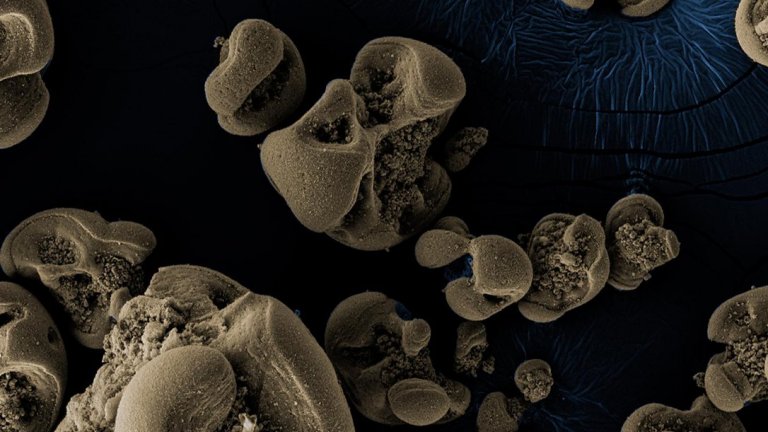TECH

The metal-eating bacteria
Biologists have discovered bacteria that feed on manganese and use metal as a source of calories.
There were predictions that these microorganisms existed more than a century ago, but none have been found or described so far.
"These are the first bacteria found that use manganese as a fuel source," said Professor Jared Leadbetter, of the California Institute of Technology. "A wonderful aspect of microbes in nature is that they can metabolize seemingly unlikely materials, such as metals, to produce useful energy for the cell."
In the picture above the image shows manganese nodules generated by the bacteria-they measure between 0.1 and 0.5 millimeter.
The study also reveals that bacteria can use manganese to convert carbon dioxide into biomass, a process called chemosynthesis. It was already known of bacteria and fungi that can oxidize manganese or pluck its electrons, but no organism that used the process to feed and grow.
Manganese is one of the most abundant elements on the earth's surface. Manganese oxides take the form of a dark and irregular substance and are common, found in underground deposits or even formed in water distribution systems.
"There is a whole body of environmental engineering literature on drinking water distribution systems blocked by manganese oxides," says Leadbetter. "But how and why this material is generated remained an enigma. Of course, many scientists considered that bacteria that use manganese for energy could be responsible, but the evidence to support this idea has not been available until now."
Bioremediation and mining
The discovery helps researchers better understand the geochemistry of groundwater. It is known that bacteria can degrade pollutants in groundwater, a process called bioremediation. In doing so, several microorganisms will "reduce" manganese oxide, which means that they donate electrons to it, similar to the way humans use oxygen from the air.
What no one knew is where manganese oxide comes from.
"The bacteria we discovered can produce it, so they enjoy a lifestyle that also serves to provide other microbes with what they need to carry out reactions that we consider beneficial and desirable," said Leadbetter.
The discovery is also relevant for understanding the manganese nodules found in much of the seabed.
These metallic balls, or nodules, are found in many oceans on Earth. In recent years, mining companies have launched plans to harvest and exploit these nodules, because in addition to manganese and iron, rare metals are often found concentrated in them.
Authors: Hang Yu, Jared R. Leadbetter
Magazine Nature

No comments:
Post a Comment